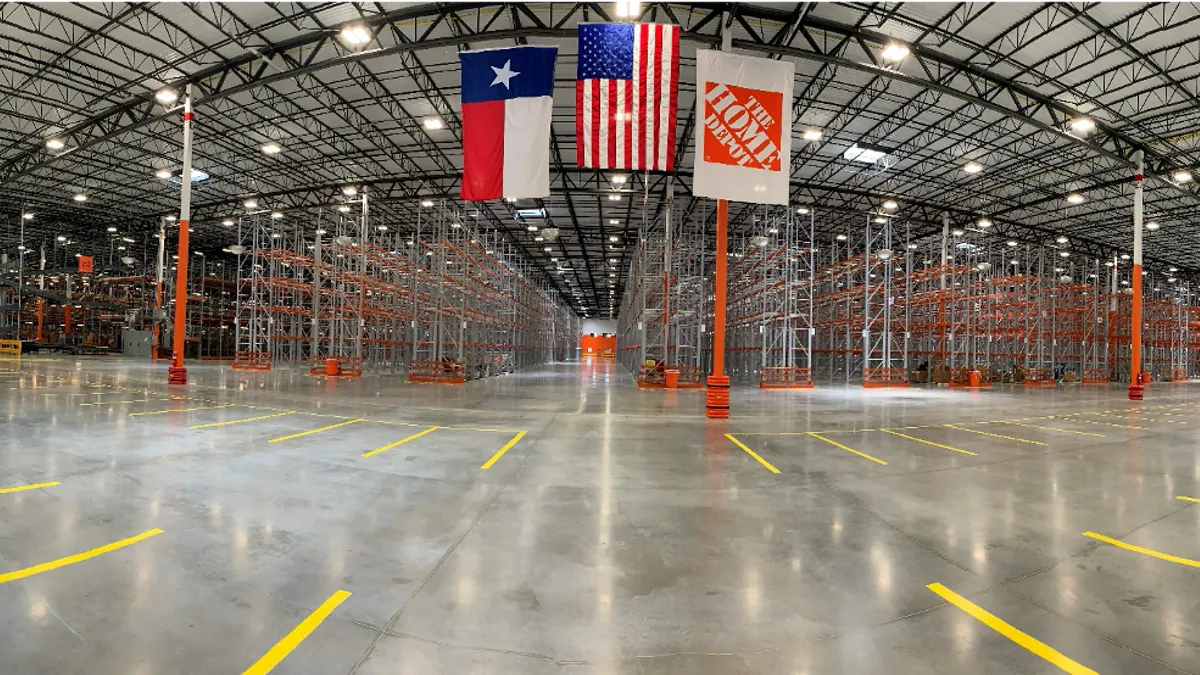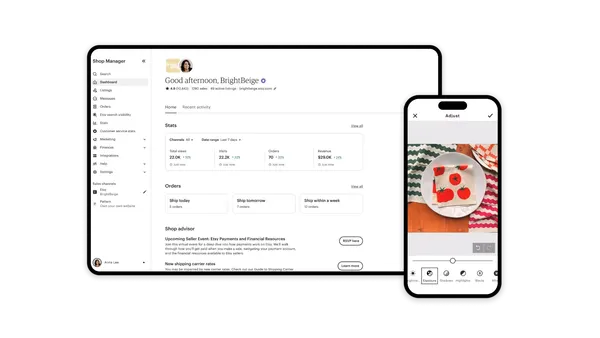Dive Brief:
- Home Depot opened a 1.5 million-square-foot fulfillment center in Dallas, as part of the retailer's $1.2 billion supply chain investment announced in 2017.
- The warehouse will fulfill store and online orders through store pickup or last-mile delivery to consumers' homes, according to a Tuesday news release. The site also manages large appliance home delivery and installation.
- The new facility includes zero-emission, hydrogen-fuel-cell charging stations that power its material handling equipment, such as forklifts and clamps. Home Depot started using hydrogen charging in warehouses in 2015 at locations in Ohio and Georgia.
Dive Insight:
Home Depot indicated a year ago that most of its new distribution facilities would come online in 2021 and 2022. Now the first facility of the 2021 lot is open in Dallas, which Home Depot described as a "key hub" for its supply chain strategy. The retailer's goal is to reach 90% of the U.S. population for same-day and next-day delivery.
The Dallas facility was planned before the pandemic and opened on schedule after two years of construction. But in other parts of its supply chain, Home Depot adjusted facilities and fulfillment operations when consumer demand and online orders ballooned during the pandemic. Sales through digital platforms were up 80% YoY in Q3 2020.
"Having the flexibility to adjust and deal with that volume was pretty important," CEO Craig Menear said at a Goldman Sachs conference in September.
The retailer converted a Chicago facility intended to be a market delivery center (which typically fulfills bulky items) temporarily to a direct fulfillment center, Menear said. Home Depot also adjusted to online order volume by beefing up omnichannel operations, standing up curbside pickup during the pandemic in the span of about 48 hours, according to Menear.
Rival home-improvement retailer Lowe's, too, is in the midst of an investment in its supply chain. CEO Marvin Ellison said the retailer will invest $1.7 billion in its supply chain, with the end goal of a "true omnichannel ecosystem." Lowe's is adding cross dock terminals, bulk distribution centers and e-commerce fulfillment centers.
Automation is part of Home Depot's strategy within its direct fulfillment centers, Stephanie Smith, senior vice president of supply chain, told the National Retail Federation. The automation quickens the flow of parcels through its network, Smith said — a critical factor if Home Depot aims to live up to its promise of same- and next-day delivery.
The Dallas facility has six miles of mechanized lines. Home Depot is incorporating voice-directed picking and "right-sized" packages that are custom-made for each order, a spokesperson said.
Home Depot has also been focused on sustainability, pledging to reduce scope 1 and 2 emissions 40% by 2030, compared to a 2011 baseline. The zero-emission, hydrogen-powered forklifts in several of its warehouses further that goal.
"We plan on installing it in all of our local market delivery centers going forward, including locations in Houston, Baltimore and Tampa," the spokesperson said, referring to hydrogen charging.
Several retailers have explored hydrogen charging at warehouses, an ideal setting for the green technology because charging infrastructure is easier to set up at facilities than nationwide on highways. Walmart added Plug Power's fuel cells and hydrogen stations at dozens of distribution centers in 2017 to power forklifts. And French grocer Carrefour in 2018 installed hydrogen storage stations and deployed more than 100 hydrogen-powered forklifts at a distribution center.














